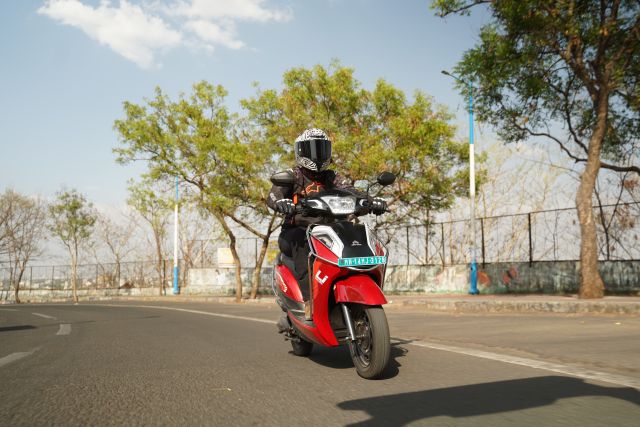
Ampere’s Magnus Neo promises to improve upon their Magnus EX scooter, but is it compelling enough to make a case for itself or is it just another drop in an ocean of electric vehicles?
At first glance, your brain will register the Ampere Magnus Neo as a scooter, just a scooter. When you notice the green number-plate, the data entry in your brain will get tweaked to “electric scooter” and that’ll be the end of that. It blends in; maybe, a little too much. Is it attractive? Somewhat. Will you take a second glance at it in a parking lot? Unlikely.
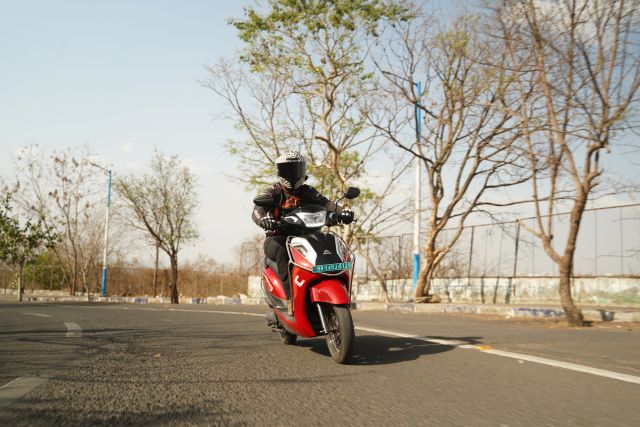
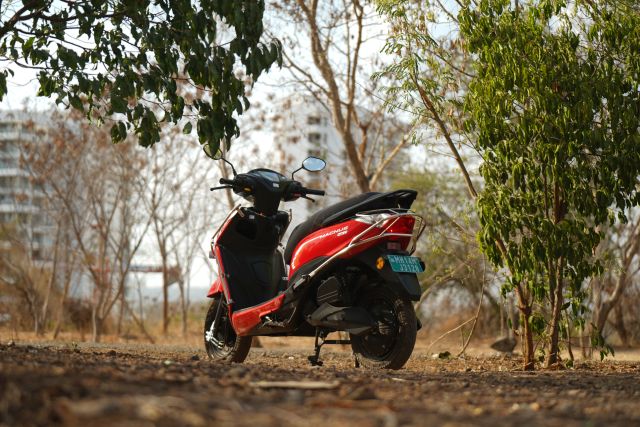
Appearance apart, the second component of a vehicle’s visual appeal lies in its fit and finish. While there is no fundamental functional deficit in any of the interaction points, qualitatively there is space for some improvement here.
Charging can be done in two ways, which is a useful addition. You can either plug the charger directly into the scooter or remove the battery and charge it at home. Removing the battery isn’t an easy procedure, though, because the battery is very heavy and needs to be lifted out at a very specific angle. Ampere claim a charge time between five and six hours and the claimed range in “eco” mode is between 80 and 95 kilometres.
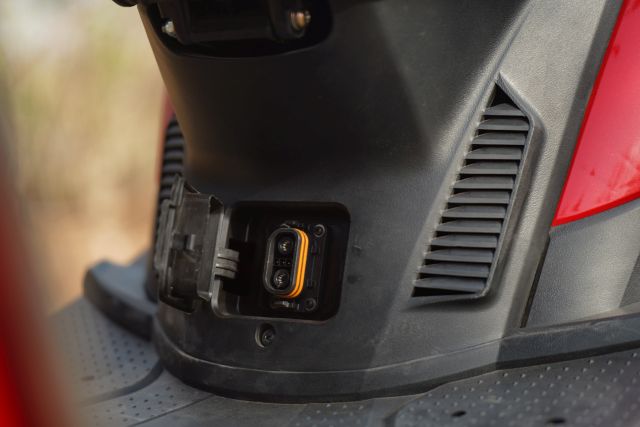
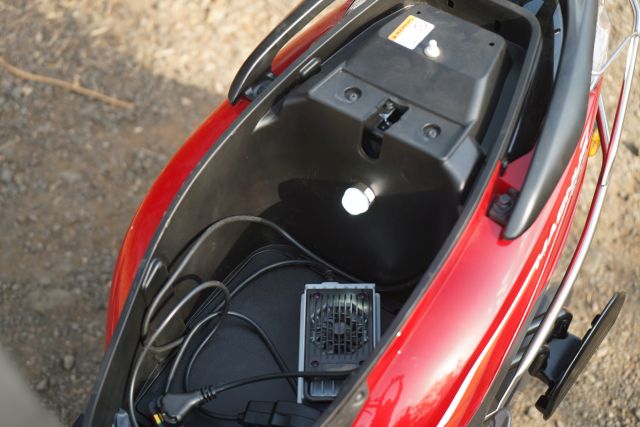
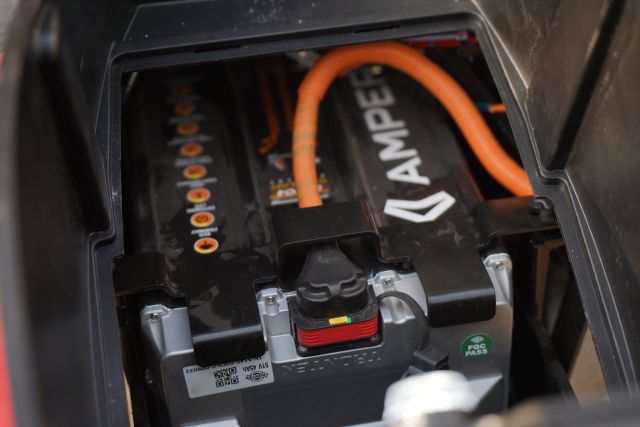
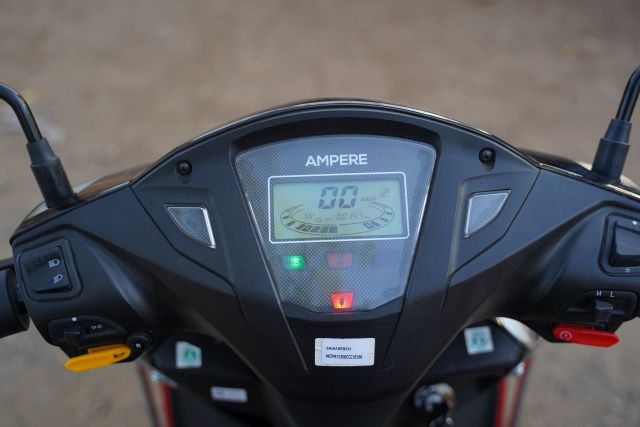
The Ampere Magnus Neo has a 2.3-kWh LFP battery and the performance you get in both riding modes is distinctly different; “eco” mode’s acceleration is very subdued and may leave you asking for more speed even within the city, causing a likely switch to the higher power mode. Eco is capped at around 45 km/h whereas “performance” mode is capped at around 60-63 km/h, which is certainly better and more usable. Uphill climbs and riding with a pillion for extended periods on high-power mode can, however, affect performance.
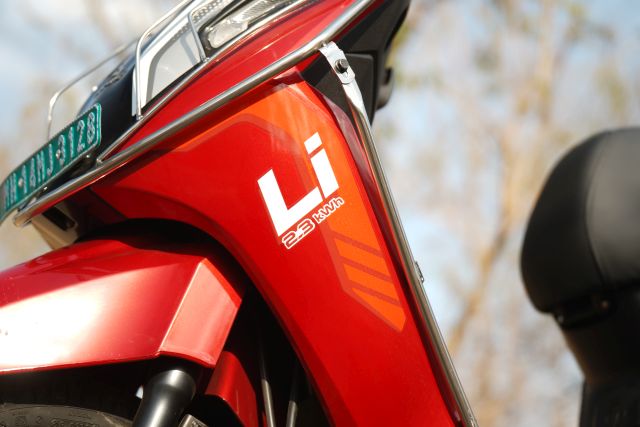
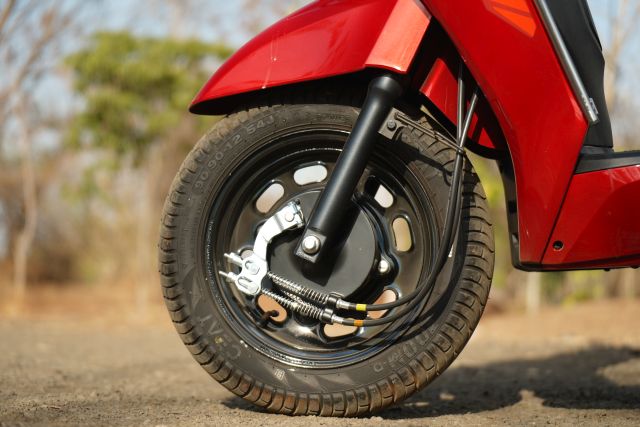
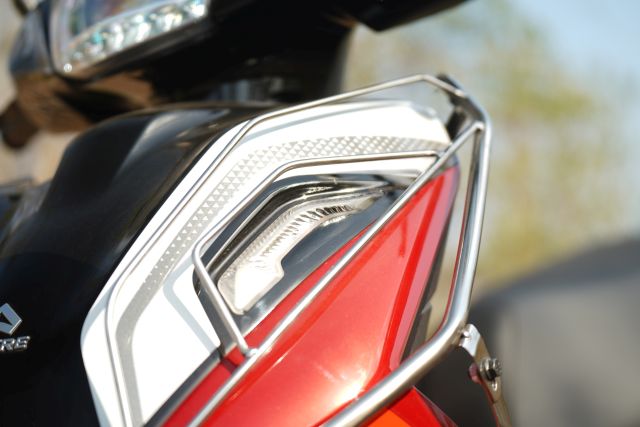
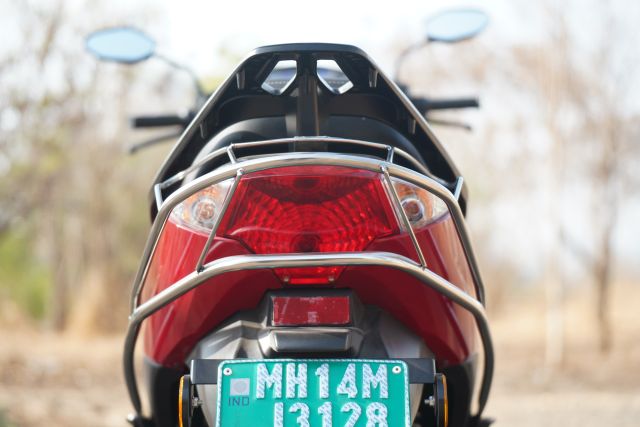
In the city, this is a functional scooter which will get the job of commuting done. I stayed in high-power mode the entire time and got a total range of 60 km. The suspension works well at low to moderate speeds and provides a decent amount of ride comfort in the city. Although braking at both ends is handled by drum brakes, they have a good amount of stopping power and did not feel lacking in any scenario. The seat is comfortable enough for short commutes, but the relatively low distance between the seat and the floor-board results in a knees-up riding position, which can become uncomfortable after a while. At city speeds, which is its primary use case, the Magnus Neo feels sufficiently composed overall.
In addition to testing the Magnus Neo in an urban environment, we also set a distance record with this scooter earlier in the year, completing the longest ride on a city speed electric scooter, covering around 2,300 kilometres in eight days.
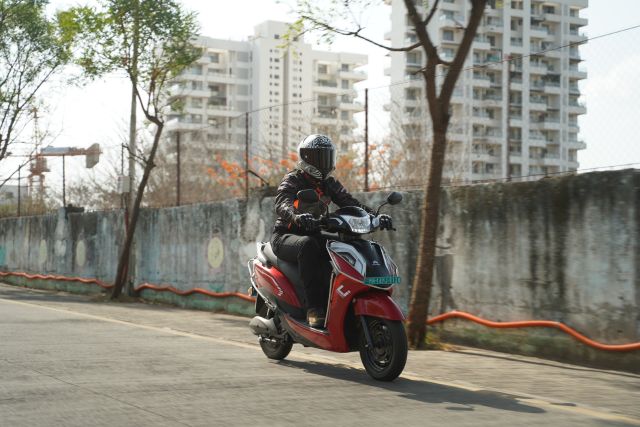
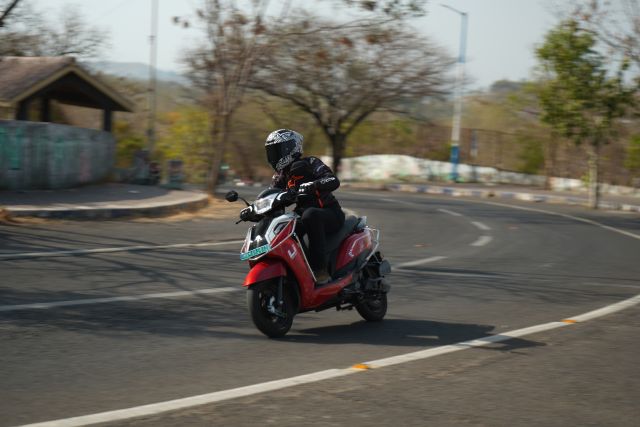
During this ride as well, we stayed in high-power mode and swapped batteries five times per day. The Magnus Neo worked consistently well during this long ride and neither the powertrain nor any other part of the scooter gave rise to any issues, which is very commendable in terms of reliability.
The Ampere Magnus Neo fulfils its purpose but there are certain aspects that could have been executed better. It’s currently available at an introductory ex-showroom price of Rs 80,000, but for that price we would have liked some more usable range with more consistent range claims, greater performance, and improvement in overall fit and finish. To sum it up, it gets the job done as a commuter but there’s room for improvement.
Also read: Brixton Cromwell 1200 Review


Leave a Reply